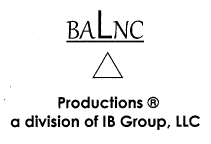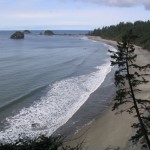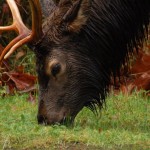Looking at the Olympic National Park Map, it’s easy to see that US Highway 101 circles the Park on its east, north and west sides. All the Park roads on the north and west sides start or emanate from US 101. The roads on the east side are all US Forest service roads, and lead to trailheads in the National Forest. Many of these trails continue into the Park, crossing the Park Boundary with an unimposing Boundary marker nailed to a convenient tree along the trail. Whether the road is in the Park or the National Forest, all the red roads (on the map) are paved and all the black roads are gravel. Every quarter (1/4) inch on the map represents one mile. Please note that the black (gravel) Dosewallips Road, starting at Brinnon on the Hood Canal (lower right side of the map), appears to, but actually does not, cross into the Park. The last 5.5 miles of this road is closed to all but foot traffic due to a washout. Call (360) 565-3131 for recorded road information.
The Park roads on the north and west sides of the Park provide direct access to the Park, its trailheads, and its facilities, including campgrounds, Ranger Stations and many of the popular attractions. Some of the roads and campgrounds are open year round. On the Park Map, black campground symbols (a black square with a white tent) are open as long into winter as the roads that service them are open. The Sol Duc (sol-duck) campground opens in March and closes with the winter snows, usually by November. The Heart O’ the Hills, Elwah (el-wa), Ozette, Hoh (ho), Kalaloch (clay-lock) and Graves Creek campgrounds are generally open year round. Green campgrounds symbols (a green square with a white tent), Altair and Fairholme, are seasonal campgrounds open May-October. Deer Park is also a seasonal campground, but because it sits at 6007 feet its season is short—determined by when the snow departs in the late spring and when snow arrives again in the fall. The South Beach campground south of Kalaloch on the Park boundary is an overflow campground, open only at the height of the summer season. Note that green square symbol campgrounds that exist outside of the Park are operated by Washington State, Clallam County or the US Forest Service. Some Park campgrounds have no water available; if so, it is noted on the Park Map. Kalaloch is the only reservation campground in the Park, call 1-877-444-6777 or go to Recreation.gov for more information.
For specific information on all campgrounds, visit the Olympic Camping page of the National Park Service web site.
In the height of the summer season, July and August, the Park’s campgrounds are crowded with visitors and, at times, fill to capacity. Here are some tips on securing a spot in the campground of your choice:
- Arrange the day so that searching for a camping spot is done between the hours of 10 am and 2 pm. Ten is when a lot of campers start to leave and two is when most campers start looking for their spot, if they haven’t read this website.
- Look at your planned itinerary in the Park, mark those sights or activities on the map, and see which campgrounds provide quick and easy access to those areas.
- Always know what your second choice of campground would be, if the first choice is full.
Driving around the Park on US 101, the major Park roads are well-marked by large, brown information signs. The major roads are often narrow and twisting as they follow the valleys to sights and trailheads. Adhere to the speed limits and take the time to enjoy the scenery. While traveling on the Park’s gravel roads, drive slowly and pay attention to the possibility of oncoming traffic, particularly coming around the many sharp, blind curves. Many of the Park’s roads are long and some are steep. It is advisable to gear down, particularly when descending; give the “Brakes a break” and let the engine slow the descent. This is very important on the Deer Park Road.
The following web sites provide additional information about the Park.



